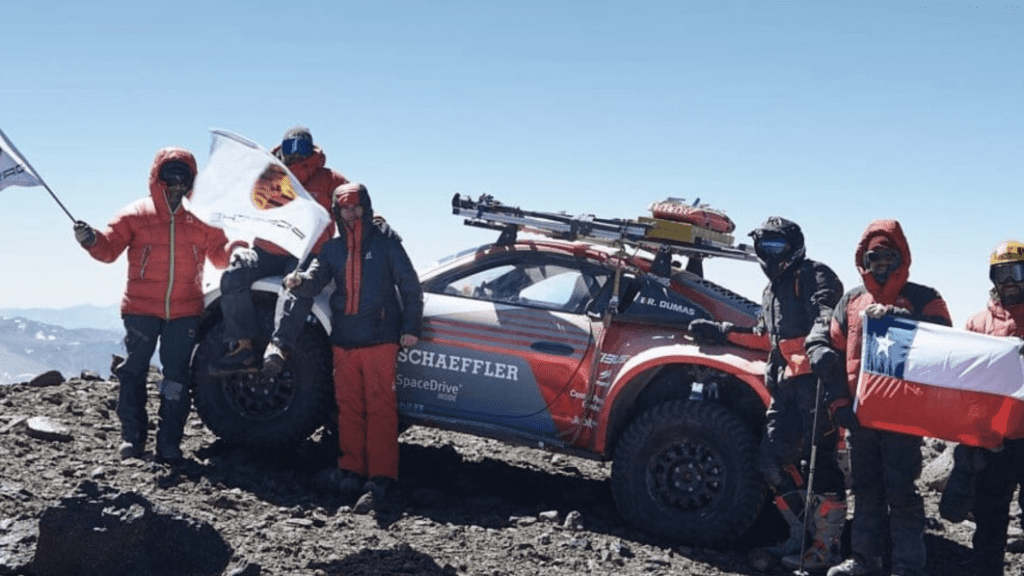Porsche 911 Carrera sets altitude record on a Chilean volcano

A modified Porsche 911 driven by three-times Le Mans champion Romain Dumas set a new world record at the Ojos del Salado volcano in Chile, ascending to a higher altitude that any earthbound vehicle had climbed previously.
The feat, accomplished December 2 in a current 911 Carrera 4S named “Edith,” used a special blend of eFuels to cope with the thin air. The fuel was produced at the HIF pilot plant “Haru Oni” in Punta Arenas, a project initiated by Porsche. Dumas’ climb eclipsed the previous record set in 2020 on a run up Mont Blanc.
The 443-horsepower 3.0 liter six cylinder boxer engine remained in stock form and was paired with the standard seven-speed manual transmission in the cars.
A pair of Porsches were sent on the mission, equipped with portal axles for increased ground clearance, Aramid fiber underbody protection, and carbon fiber seats. The project marked a return for the car and the team to the Ojos del Salado volcano, having visited in 2022 and achieved an exploratory run exceeding 6,000 meters.
This month’s expedition was supported by an international team from several countries, including Chile, France, Germany, the United States, Canada, and Switzerland. Commercial sponsors included the Schaeffler Group, Mobil 1, BFGoodrich and TAG Heuer.
The team was challenged by extreme conditions of thin air at high altitudes and freezing temperatures. “I’ll never forget this experience. It was an extraordinary feeling to drive where no car has gone before,” said Dumas after his descent from the volcano. “The 911 managed to go higher than any other earthbound vehicle in history. We reached a point where we were met by the true summit of the west ridge — we could go no higher. So this really was the maximum altitude that can be achieved.”
The lead car received a special additional piece of technology — steer by wire — developed and provided by Schaeffler Group, according to a statement from Porsche. “The system called Space Drive was capable of meeting the unique and extreme demands of the volcano and the terrain, offering precision and detailed feedback to allow Dumas to place the car precisely where he needed it — often while ascending precarious and near-vertical slopes,” the carmaker said.
Related video:



